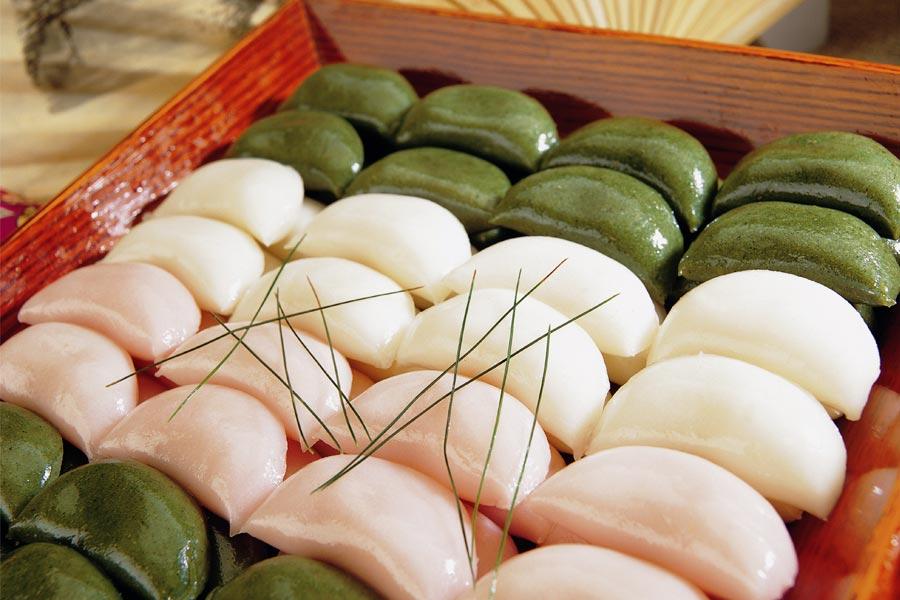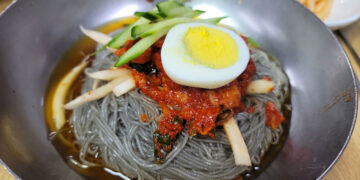Looking for more popular Korean traditional foods to present during Chuseok other than the classic Tteoguk and Songpyeon? Join us as we explore further options to celebrate Chuseok with 6 most popular iconic Korean foods commonly served during cultural holidays in South Korea.
Chuseok and Its Culinary Traditions – Why Songpyeon?
Learning about South Korean traditions and culture has always been an exciting journey, especially as we approach one of the most cherished holidays — Chuseok, also known as the Korean Harvest Festival or Korean Thanksgiving.
Taking place from September 16 to 18 this year, Chuseok has been one of the most highly-anticipated holidays in South Korea. It is a time when South Koreans pause their busy lives, take a break, and head back to their hometowns to reunite with beloved family members and relatives.
What makes Chuseok so special? Beyond the gathering of families, it’s a celebration deeply rooted in honoring ancestors and the rich agricultural heritage of Korea.
And, of course, no Chuseok is complete without its vibrant culinary traditions! The tables are often filled with an impressive array of Korean traditional foods that bring everyone together for a delicious and meaningful feast.
Among all Korean traditional foods, Songpyeon, the crescent-shaped rice cake, often takes center stage during Chuseok because of its cultural and symbolic importance. This culinary treasure of South Korea represents wishes for good fortune as the country is celebrating the harvest festival during the Thankgiving holiday.

However, there’s so much more to explore when it comes to Chuseok cuisine. There are many other Chuseok traditional foods with its unique history and flavor, are shared along with Songpyeon during the holiday, offering a true taste of Korean heritage.
6 Popular Korean Traditional Foods During Holidays
So, if you’re curious about what other Korean traditional foods are served alongside Songpyeon during Chuseok, get ready to discover the delicious diversity of this festive feast. Let’s dive in and uncover the delightful dishes that make Chuseok one of Korea’s most flavorful holidays!
Jeon (전)
Firstly, among all the famous Korean traditional foods, Jeon (전) remains on the very top of our list. You will certainly find Jeon in Chuseok as well as most cultural holidays in South Korea. It is that bunch of various Korean traditional pancakes made with various ingredients like vegetables, meat, or seafood, and are usually pan-fried in batter.
The key to the popularity of Jeon as one of the traditional foods served during most holidays is because it symbolizes abundance and variety. Therefore, for Chuseok, Jeon is the exact mirror in values, as it is extremely versatile in ingredients.
But most importantly, Jeon actually ties deeply to the Charye ceremony, where it is served as an offering to ancestors. Its simplicity and versatility make this cuisine ideal for such important rituals, where families gather to honor their ancestors and give thanks for the harvest.
Additionally, Jeon represents warmth and comfort, which align with the communal spirit of holidays like Chuseok. These are why other than Songpyeon, Jeon remains one of selected traditional foods during Chuseok and other cultural holidays.
Mandu (만두)
Secondly, you will most likely find Mandu (만두) on the Korean family tables during Chuseok and other cultural holidays in South Korea. This exquisite cuisine has been a traditional part of Korean feasts for centuries. Why? Because Manduactually symbolizes prosperity and good fortune.
Did you know that there’s a reason behind all the different stuffings in Mandu? The different variety of Mandu’s stuffings, with ingredients like pork, beef, tofu, and vegetables, actually represent wealth and abundance.
Not only that, but the cultural importance lies in the making process if Mandu itself. In fact, the traditional belief is that the process of making Mandu is a communal activity that brings families together. That is why family members in South Korea often gather during Chuseok and other holidays to prepare and fold Mandu, creating an opportunity for bonding.
Japchae (잡채)
Thirdly, we have Japchae (잡채), one of the most popular Korean traditional foods that has made its name globally.
Made from glass noodles, vegetables, and sometimes meat, Japchae is a vibrant and savory dish, representing abundance and prosperity, which aligns perfectly with the themes of Chuseok. Families in South Korea incorporate this cuisine along with Songpyeon and other Korean foods during Chuseok. It is to celebrate the harvest and giving thanks for the season’s bounty.
Additionally, the traditional belief also mentions that the colorful ingredients in Japchae (carrots, spinach, mushrooms) symbolizes harmony and balance. These values are, in fact, extremely essential in family gatherings like Chuseok.
And most importantly, Japchae also offers impressive convenience: served warm or cold, and pairs well with other festive dishes.
Torantang (토란탕)
Next, Koreans also serve Torantang (토란탕), or taro soup, as one of the Korean traditional foods during Chuseok and other holidays.
Since taro (or toran) is typically harvested in the fall, making it an ideal seasonal dish for a celebration that revolves around the harvest season.
Apart from its cultural significance, Torantang offers great health benefits. Taro is known to be alkaline and rich in nutrients, which helps with digestion and prevents constipation. Now, most Korean traditional foods in Chuseok feasts tend to be hearty. Hence, this soup provides balance by aiding digestion while offering a lighter, nutritious option amidst the rich feast.
In addition, the soft, hearty texture of the taro combined with a savory broth and tender beef makes Torantang not only a comforting dish but also symbolic of family warmth and unity. It also perfectly complements the festive Chuseok atmosphere. After all, this Korean thanksgiving is where families gather to share meals that celebrate both heritage and the bounty of the harvest.
Tteokgalbi (떡갈비)
Moving on, Tteokgalbi (떡갈비) is another one of Korean popular traditional foods during Chuseok and other Korean holidays. Not only is it delicious, but it also carries symbolic meaning.
Made from minced and marinated beef or pork rib meat, Tteokgalbi is shaped into patties and grilled to perfection. Its tenderness and rich flavor make it a standout dish for festive occasions.
During Chuseok, Tteokgalbi represents abundance and family unity, as it is commonly shared at large family gatherings. The dish holds particular significance as a special treat, often reserved for important celebrations. Hence, it’s usually on Chuseok and Seollal (Lunar New Year). It’s not something families typically enjoy on an ordinary day, which heightens its festive appeal.
Moreover, Tteokgalbi has historical roots in ancestral rituals. As families prepare elaborate meals for offerings in Charye (ancestral rites), the labor-intensive and high-quality nature of Tteokgalbi reflects the respect and care devoted to these important ceremonies. Its preparation is a gesture of honor, symbolizing the family’s dedication to tradition.
Meanwhile, what adds to Tteokgalbi’s popularity during Chuseok and holidays in South Korea is its versatility. This protein-rich cuisine pairs wonderfully with other Chuseok staples like jeon, galbijjim, and seasoned vegetables. That way, Tteokgalbi becomes a hearty and satisfying option that complements the variety of flavors on the Chuseok table.
Galbijjim (갈비찜)
Finally, Galbijjim (갈비찜), or braised short ribs, is another Korean most popular culinary selection to enjoy during Chuseok and other major holidays in South Korea. And you must take note that the significance of this Korean traditional food goes beyond just its savory taste.
First of all, Galbijjim has deep roots in Korean royal court cuisine. It symbolizes abundance and prosperity, which perfectly aligns with the themes of gratitude and family unity during Chuseok. The tender, flavorful ribs, slow-cooked with chestnuts, jujube, and gingko nuts, flawlessly embody harmony and the close bonds between family members. And so, it becomes an ideal dish for large family gatherings.
In addition to its cultural symbolism, Galbijjim is prepared with care, using ingredients like Korean pear and soy sauce that reflect respect and thoughtfulness. These qualities make it a fitting dish for honoring ancestors during Charye (ancestral rites), where families prepare the finest foods to show reverence to their ancestors.
Galbijjim’s rich flavor, hearty warmth, and celebratory nature make it a key component of Chuseok meals to foster a sense of joy and togetherness. The dish serves as a reminder of family ties and the abundance hope to welcome in the future. This is why it continues to hold a cherished spot on holiday tables across Korea, year after year.
Celebrate Chuseok with Your Loved Ones
At last, Chuseok has become a heartful celebration of family, gratitude, and tradition in South Korea. That is why the variety of Korean traditional foods served along with Songpyeoon during Chuseok truly adds a rich layer of meaning to the festivities.
So, whether you’re gathering with loved ones or simply looking to explore Korean culture, these popular dishes will surely offer a delightful taste of Chuseok culinary heritage.
Happy feasting!
Related Posts
2,659 total views, 2 views today



















